Jan. 31, 2023
Prelims Pointers
Jan. 31, 2023
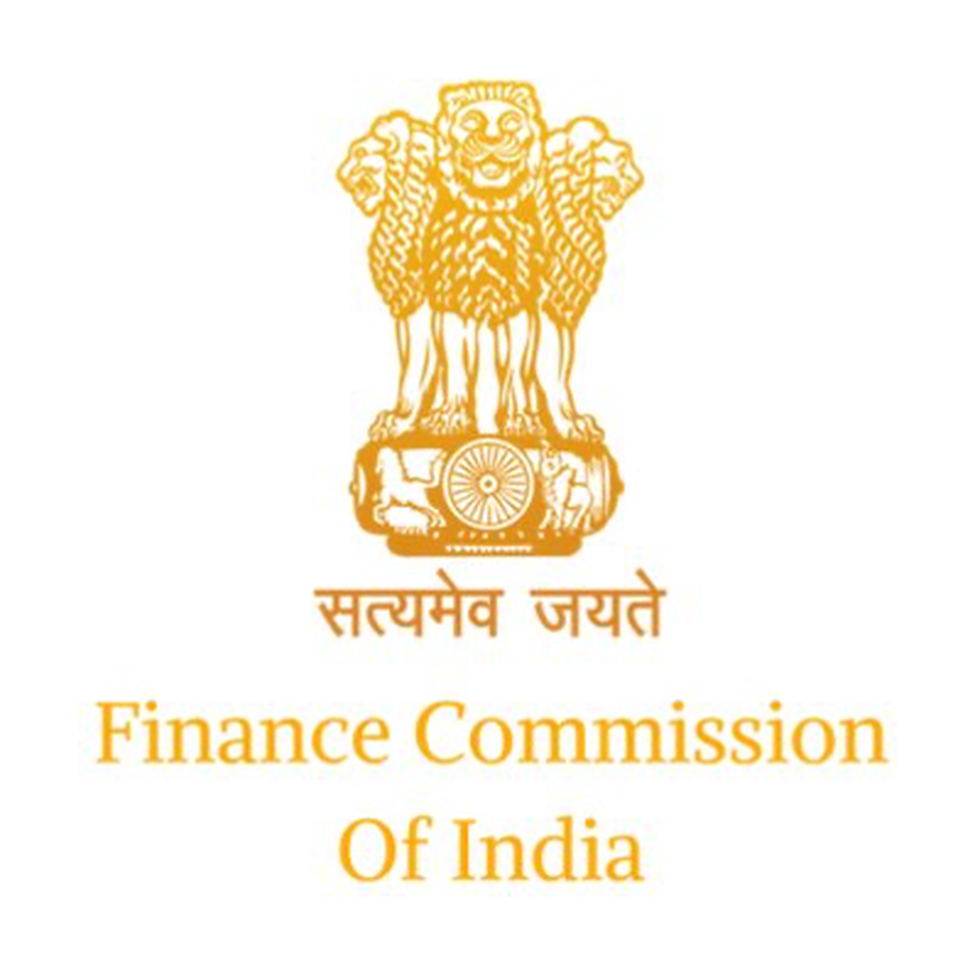
About Finance Commission:
- What is it? It is constitutional body for giving recommendations on distribution of tax revenues between the Union and the States and amongst the States themselves.
- Who constitutes? The Finance Commission is constituted by the President under article 280 of the Constitution.
- It is constituted at the end of every fifth year or earlier, as the deemed necessary by the President.
- Parliament may by law determine the requisite qualifications for appointment as members of the Commission and the procedure of their selection. On account of this, The Finance Commission (Miscellaneous Provisions) Act, 1951 was passed.
- Mandate: It is the duty of the Commission to make recommendations to the President as to:
- the distribution between the Union and the States of the net proceeds of taxes which are to be, or may be, divided between them and the allocation between the States of the respective shares of such proceeds;
- the principles which should govern the grants-in-aid of the revenues of the States out of the Consolidated Fund of India;
- the measures needed to augment the Consolidated Fund of a State to supplement the resources of the Panchayats and Municipalities in the State on the basis of the recommendations made by the Finance Commission of the State;
- any other matter referred to the Commission by the President in the interests of sound finance.
- Composition: It consists of a Chairman and four other members appointed by the President.
- Qualifications of members: The Chairman of the Commission is selected from among persons who have had experience in public affairs and the four other members are selected from among persons who
- are, or have been, or are qualified to be appointed as Judges of a High Court; or
- have special knowledge of the finances and accounts of Government; or
- have had wide experience in financial matters and in administration; or
- have special knowledge of economics
- Tenure of members: Every member will be in office for the time period as specified in the order of the President and is eligible for reappointment.
- Recommendationsof the Finance Commission are not binding on the government.
Prelims Pointers
Jan. 31, 2023

About Assets under management (AUM):
- What is it? AUM is the total market value of investments a financial institution (such as a bank, mutual fund, or hedge fund) owns or manages on behalf of its clients.
- AUM can be calculated in different ways, depending on the firm’s discretion.
- The calculation is done on the basis of either the total capital that the firm handles or calculating the Individual client’s money.
- AUM fluctuates daily reflecting the variable returns from stocks, mutual funds and change in prices of fixed investment.
- Importance of AUM:
- AUM helps to build the market value of the firm.
- It can be used as a market tool to attract potential new customers. The higher a firm's AUM is, the more likely people are to trust them and invest with them.
- A fund's management fees and expenses are often calculated as a percentage of AUM.
What is Book value and Market value of a company?
- A company's book value is the amount of money shareholders would receive if assets were liquidated and liabilities paid off.The book value of an asset is strictly based on the company’s balance sheet
- The market value is the value of a company according to the markets based on the current stock price and the number of outstanding shares.
- When the market value is less than book value, the market doesn't believe the company is worth the value on its books.
- A higher market value than book value means the market is assigning a high value to the company due to expected earnings increases.
Prelims Pointers
Jan. 31, 2023
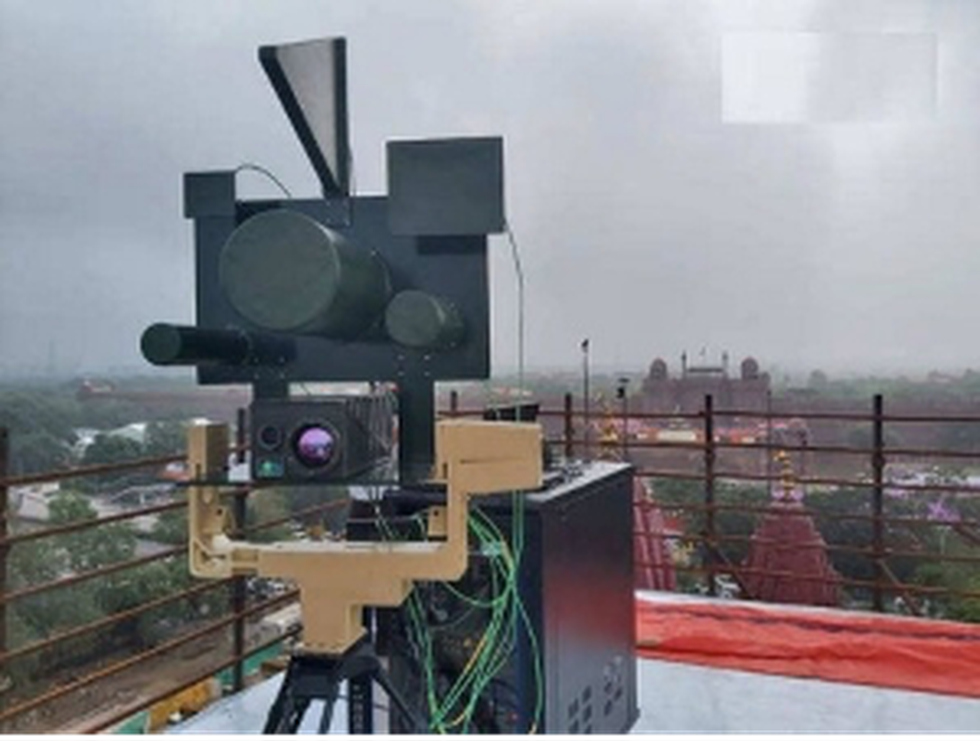
Key facts about D4 Drone system:
- What is it? The Drone Detect, Deter and Destroy system (D4S) is the first indigenously developed anti-drone system to be inducted into the Indian Armed Forces.
- It is developed by Defence Research and Development Organisation (DRDO) and manufactured by Bharat Electronics Limited (BEL).
- Purpose: To detect rogue drones that are likely to attack most vulnerable places.
- Features:
- D4 system can instantly detect and jam micro drones (Soft kill) and use a laser-based kill mechanism to terminate targets (Hard kill).
- It uses DRDO's RF/Global Navigation Satellite System (GNSS) to detect the frequency which is being used by the controller and the signals are then jammed.
- It can detect and jam micro-drones at a distance of up to 3 km.
- It can lase a target 1-1.25 km far depending on the wattage of the laser weapon.
About Aero India:
- It is a biennial air show and aviation exhibition held in Bengaluru, India at the Yelahanka Air Force Station.
- It is organised by the Defence Exhibition Organisation, Ministry of Defence.
Prelims Pointers
Jan. 31, 2023

About Rohini Commission:
- The commission was set up by the President under Article 340 of the Indian Constitution on October 2,
2017.
- It is headed by former Delhi High Court judge, Justice G. Rohini (retd).
- Mandate: To examine the issues related to the sub-categorisation of Other Backward Classes.
- Terms of References:
- to examine the extent of inequitable distribution of benefits of reservation among the castes or communities included in the broad category of Other Backward Classes, with reference to such classes included in the Central List;
- to work out the mechanism, criteria, norms and parameters in a scientific approach for sub-categorisation within such Other Backward Classes;
- to take up the exercise of identifying the respective castes or communities or sub-castes or synonyms in the Central List of Other Backward Classes and classifying them into their respective sub-categories.
What does Article 340 says?
- The Article reads, "The President may, by order, appoint a Commission consisting of such persons as he thinks fit to investigate the conditions of socially and educationally backward classes within the territory of India and the difficulties under which they labour and to make recommendations as to the steps that should be taken by the Union or any State to remove such difficulties and to improve their condition..."
Prelims Pointers
Jan. 31, 2023
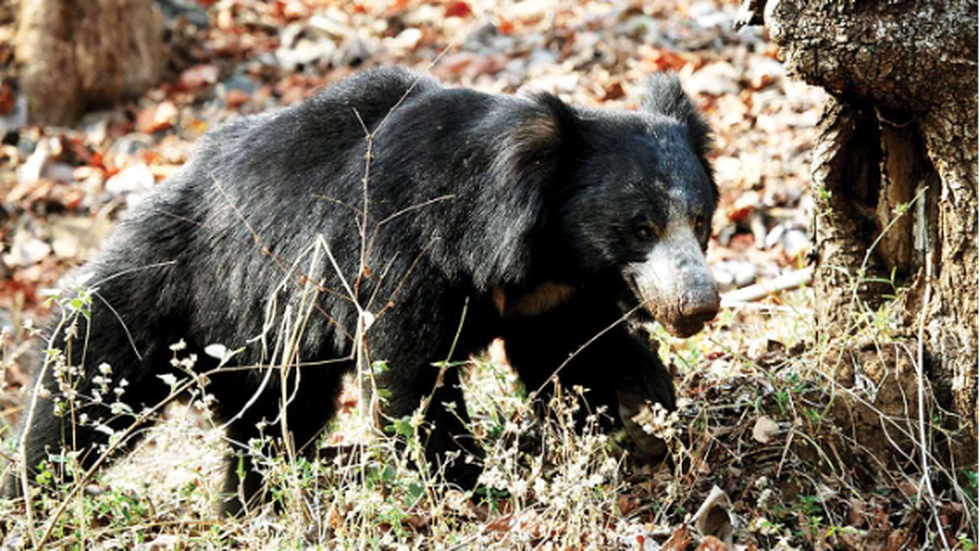
About Sariska Tiger Reserve (STR):
- Location: It is located in the Aravalli hills in the Alwar district of Rajasthan
- This area was a hunting preserve of the erstwhile Alwar state.
- It was declared as a wildlife reserve in 1955 and then a Tiger Reserve in 1978 under Project Tiger.
- It is the first reserve in the world which successfully relocated tigers.
- Sariska is also famous for old temples, palaces and lakes such as Pandu Pol, Bhangarh Fort, Ajaibgarh, Pratapgarh, Siliserh Lake and Jai Samand Lake.
- Topography: Grasslands, dry deciduous forests, cliffs, and rocky landscapes.
- Flora: salar, kadaya, dhak, gol, ber , Banyan , gugal , bamboo , kair , adusta etc
- Fauna: Bengal tigers, leopard, jungle cat, Indian jackal, chital, chinkara, four-horned antelope, Indian peafowl, grey partridge, Indian peafowl, Indian eagle-owl etc.
Sloth Bear:
- Sloth bears are one of the eight bear species found across the world.
- Scientific name: Melursus ursinus
- Distribution: They mainly inhabit the region of India, Nepal, Sri Lanka and Bhutan.
- Features:
- They have long, shaggy dark brown or black fur and curved claws, which are the longest out of any of the bear species.
- It feeds on fruits, ants and termites.
- Conservation Status:
- IUCN: “Vulnerable”
- Indian Wildlife Protection Act, 1972: Schedule 1
Prelims Pointers
Jan. 31, 2023

About Shumang Leela:
- The meaning of this theatre form is “courtyard performance”, which is performed in Manipur.
- In this, the roles of women are all played by men, called Nupi Shabis.
- In the case of women’s theatre groups, the roles of men are played by women.
- The female roles are taken up by transgender actors.
- The tradition is believed to be descended from Lai Haraoba, a ritual of the Meitei community of Manipur.
- The plays provide a vehicle for educating the public about social, political, and economic issues.
- Types - Shumang Leela is of two types
- Nupa Shumang Leela - Performed only by men
- Nupi Shumang Leela - Performed only by women
Prelims Pointers
Jan. 31, 2023
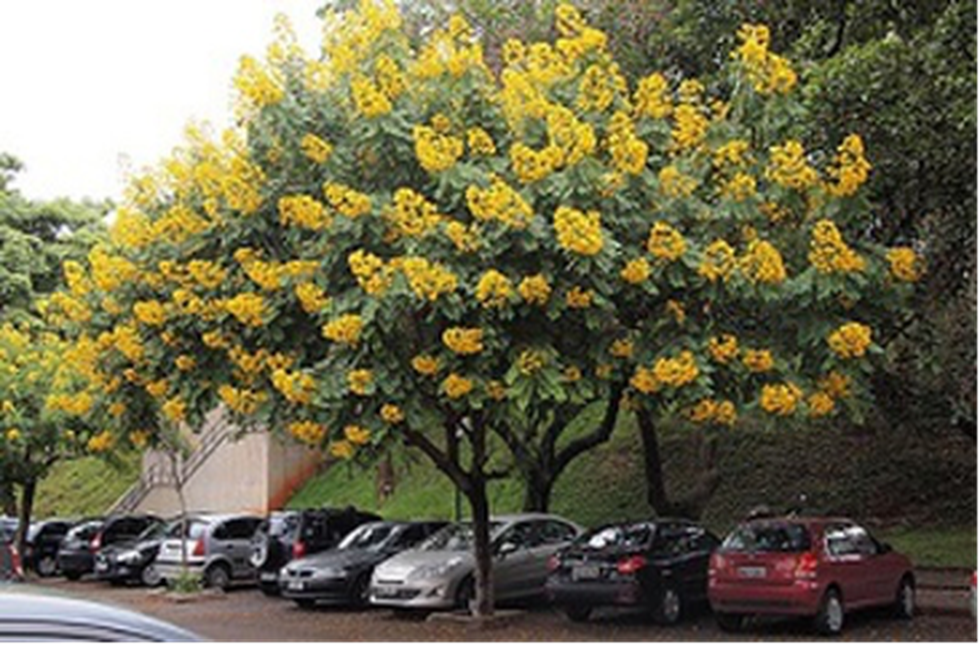
Why in news?
- Based on the results of the experimental study done at the Periyar Tiger Reserve, the plan envisages landscape-level management of the tree.
- The two key factors considered in developing the management protocol were the fast nature of the spread of the tree in natural forests, and the restoration of natural forests based on landscape.
What is Senna spectabilis?
- Senna spectabilis is an invasive species.
- It is introduced as an ornamental species and for use as firewood from South and Central America.
Key facts about the Periyar Tiger Reserve
- It is nestled in the southern region of Western Ghats in the state of Kerala.
- It is drained by the rivers Mullayar and Periyar.
- Flora: tropical evergreen, semi-evergreen, moist deciduous forests and grasslands.
- Fauna: Tiger, Elephant, Lion-tailed macaque, Nilgiri Tahr etc.
Prelims Pointers
Jan. 31, 2023

About World Leprosy Day:
- In India, it is observed on 30th January every year, coinciding with the death anniversary of Mahatma Gandhi.
- The theme of World Leprosy Day 2023 is “Act Now. End Leprosy.
Key facts about Leprosy:
- It is a chronic infectious disease caused by a type of bacteria, Mycobacterium leprae.
- The disease predominantly affects the skin and peripheral nerves if left untreated, the disease may cause progressive and permanent disabilities.
- Transmission: The bacteria are transmitted via droplets from the nose and mouth during close and frequent contact with untreated cases.
- The majority of annual new case detections are from South-East Asia.
- It is a neglected tropical disease (NTD) which still occurs in more than 120 countries, with more than 200 000 new cases reported each year.
India’s Initiatives related to Leprosy
- The Government launched National Leprosy Eradication Programme (NLEP) to make India leprosy free.
- It is a Centrally Sponsored Scheme under the umbrella of the National Health Mission (NHM).
- It is implemented in all the States/UTs.
Global Initiatives related to Leprosy
- World Health Organisation: The Global Leprosy Strategy 2021–2030 “Towards zero leprosy” was developed through a broad consultative process with all major stakeholders during 2019 and 2020.
Prelims Pointers
Jan. 31, 2023
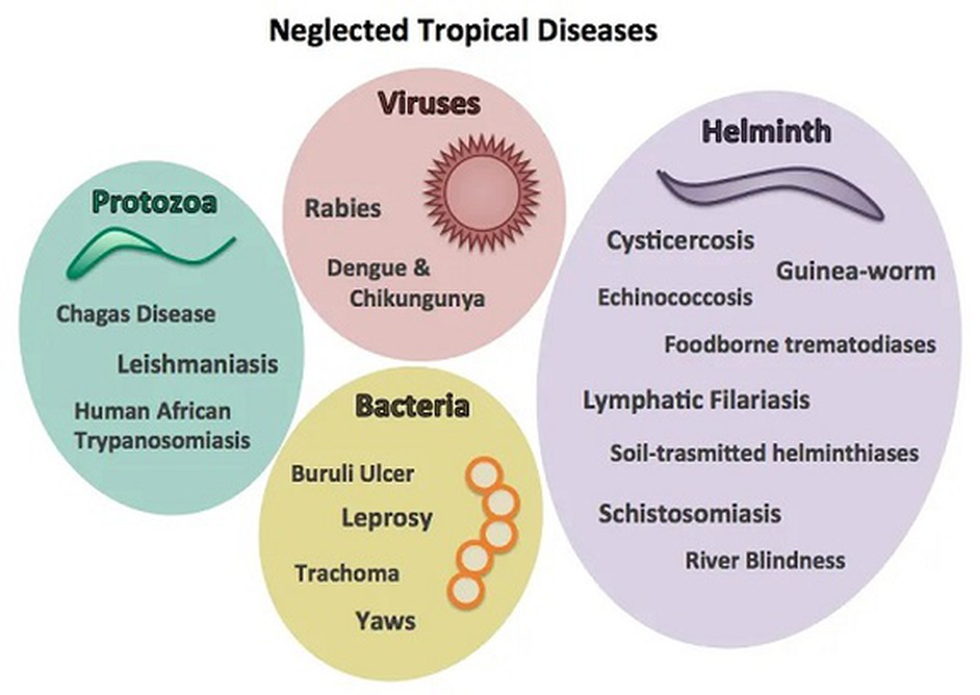
About Neglected Tropical Diseases
- Neglected tropical diseases (NTDs) are a diverse group of tropical infections which are common in low-income populations in developing regions of Africa, Asia, and the Americas.
- They are caused by a variety of pathogens such as viruses, bacteria, protozoa and parasitic worms (helminths).
- There are a diverse group of 20 diseases that are affecting more than 1 billion people who live in impoverished communities.
- They include Buruli ulcer, Chagas Dengue, Chikungunya, Echinococcosis; foodborne trematodes; human African trypanosomiasis; leishmaniasis; leprosy; Lymphatic filariasis, mycetoma, etc
Global Initiative to end NTDs
- The WHO’s new road map for 2021–2030 calls for three strategic shifts to end NTDs:
- From measuring process to measuring impact.
- From disease-specific planning and programming to collaborative work across sectors.
- From externally driven agendas reliant on programmes that are country-owned and country-financed
Prelims Pointers
Jan. 31, 2023

Why in news?
- Microsoft researchers under this project have been working toward creating digital ecosystems for Indian languages that do not have enough presence online,
- The main goal of the Project? To impact underserved communities through enabling language technology by creating economic opportunities, building technological skills, enhancing education and preserving local languages and cultures for future generations.
- Microsoft Research (MSR) has chosen to focus on three languages namely; Gondi, Mundari and Idu Mishmi.
Key facts about Gondi, Mundari and Idu Mishmi Language
Gondi Language
- Language family:Gondi is a South-Central Dravidian language.
- Script:The Gondi script is perhaps the only script in the country besides Urdu which is written right to left.
- In northern and central India, it is the only language, barring Gujarati, which has a script of its own.All other north and central Indian languages use the Devnagri script.
- Dialects:Gondi, is heavily influenced by the other local languages spoken in the respective states.
- This is spoken by close to three million speakers in Madhya Pradesh, Maharashtra, Chhattisgarh, Andhra Pradesh and Telangana.
Mundari language
- Mundari (Munɖari) is a Munda language of the Austroasiatic language family spoken by the Munda tribes in the eastern Indian states of Jharkhand, Odisha and West Bengal.
- Mundari Bani, a script specifically to write Mundari, was invented by Rohidas Singh Nag.
Idu Mishmi
- The Idu Mishmi language is a small language spoken by the Mishmi people in the Dibang Valley district, of the Indian state of Arunachal Pradesh speakers in China 1994.
- It is considered an endangered language.
Jan. 30, 2023
Prelims Pointers
Jan. 30, 2023
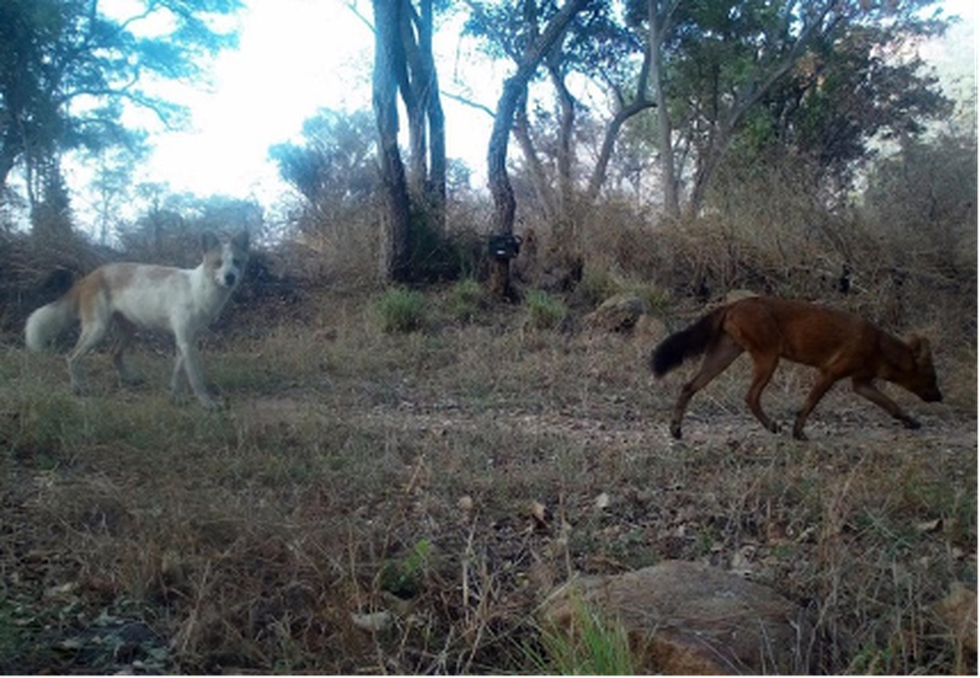
रंगहीनता के बारे में:
- रंगहीनता उन कोशिकाओं का परिणाम है, जो त्वचा, स्कैल, आंखों और बालों को रंगने के लिए आवश्यक वर्णक - मेलेनिन का उत्पादन नहीं कर सकती हैं।
- जब माता-पिता दोनों में अप्रभावी जीन होते हैं तो यह अनुवांशिक स्थिति संतानों में चली जाती है। जो रंगहीनता से ग्रसित होते हैं, वे जीव सफेद या गुलाबी दिखाई दे सकते हैं।
- मेलेनिन का उत्पादन मेलेनोसाइट्स (melanocytes) के भीतर होता है, जो विशेष कोशिकाएं होती हैं लेकिन अल्बिनो स्तनधारियों (albino mammals) में पूरी तरह कार्यात्मक नहीं हैं।
ढोल के बारे में मुख्य तथ्य:
- ढोल या एशियाई जंगली कुत्ता सम्पूर्ण भारत के तीन समूहों में पाया जाता है, अर्थात् पश्चिमी और पूर्वी घाट, मध्य भारतीय भू-क्षेत्र और उत्तर पूर्व भारत।
- पश्चिमी और पूर्वी घाट, ढोल के लिए एक उत्तम क्षेत्र हैं।
- संरक्षण की स्थिति:
-
IUCN रेड लिस्ट: संकटग्रस्त (Endangered)
-
वन्यजीव संरक्षण अधिनियम 1972: अनुसूची II
-
साइट्स: परिशिष्ट II
कावेरी वन्यजीव अभ्यारण्य के बारे में:
- यह कर्नाटक में तीन जिलों- चामराजनगर, मांड्या और रामनगर तक फैला हुआ है।
- अभ्यारण्य उत्तर में बन्नेरघट्टा राष्ट्रीय उद्यान, दक्षिण में बीआरटी बाघ अभ्यारण्य (BRT Tiger reserve) और माले महादेव पहाड़ी वन्यजीव अभ्यारण्य के बीच एक महत्वपूर्ण कड़ी प्रदान करता है।
- इस क्षेत्र में तीन नदियाँ हैं- कावेरी, अर्कावती और शिमशा।
- वनस्पति: मुख्य रूप से शुष्क पर्णपाती और झाड़ीदार वन होते हैं। लेकिन वनों की एक विस्तृत श्रृंखला पायी जाती है - जिसमें आर्द्र पर्णपाती, अर्ध-सदाबहार, सदाबहार, शोला, नदीय, हार्डविक वन आदि शामिल हैं।
- जीव: अभ्यारण्य में पाए जाने वाले महत्वपूर्ण जानवर बाघ, हाथी, तेंदुआ, बाइसन, जंगली कुत्ता आदि हैं।
Prelims Pointers
Jan. 30, 2023
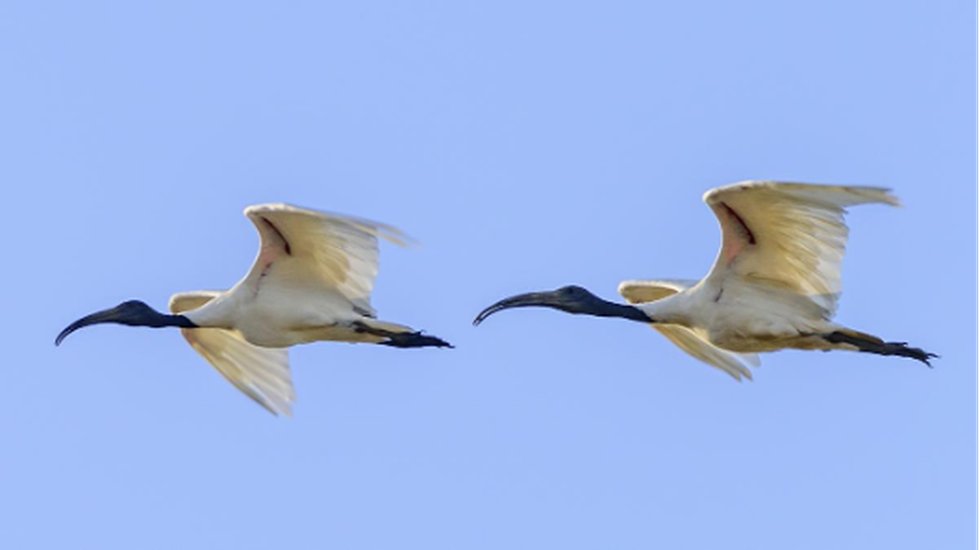
About Black-Headed Ibis:
- It is a large wader bird with a white body and bare black head and neck. Males and females look similar and both have greyish tail feathers.
- These are called wader birds due to their adaptability to a wide variety of aquatic environments.
- They are found primarily around wetlands including agricultural fields and occasionally around coastal areas.
- It is found in South- and Southeast Asia from India to the west and as far east as Japan.
- Conservation status
- IUCN Red List: Near Threatened
- The Wildlife Protection Act 1972:Schedule-IV
Prelims Pointers
Jan. 30, 2023
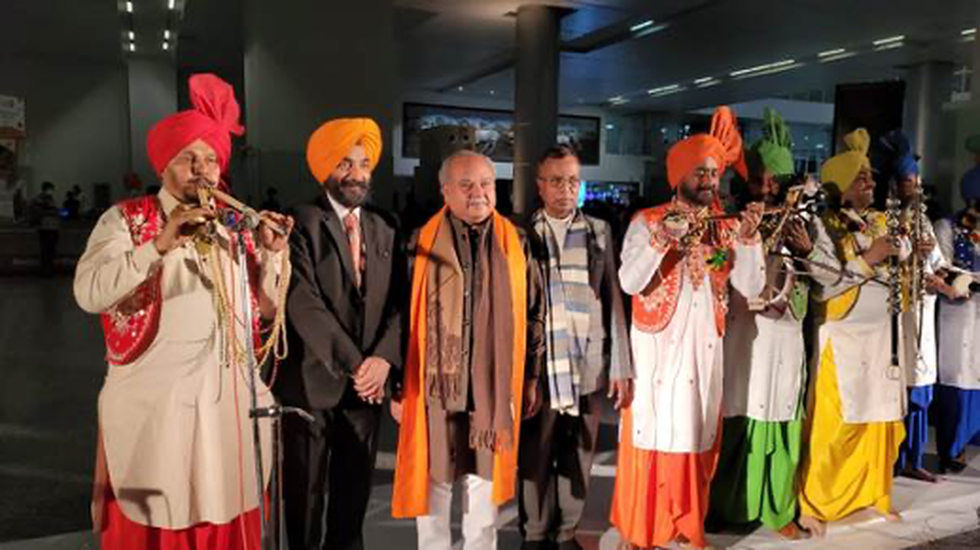
About International Financial Architecture Working Group
- This G-20 finance track focuses on strengthening international financial architecture.
- It will also aim to address various challenges faced by vulnerable countries.
- Around 100 delegates from G-20 member nations, invited countries and international organizations will participate in the two-day meeting.
- Discussions during the two-day meeting will be jointly moderated by the Ministry of Finance and the Reserve Bank of India, as well as by the co-chairs of the International Financial Architecture Working Group, - France and South Korea.
- The meeting will also focus on finding ways to maximize aid to poor and vulnerable countries.
Prelims Pointers
Jan. 30, 2023
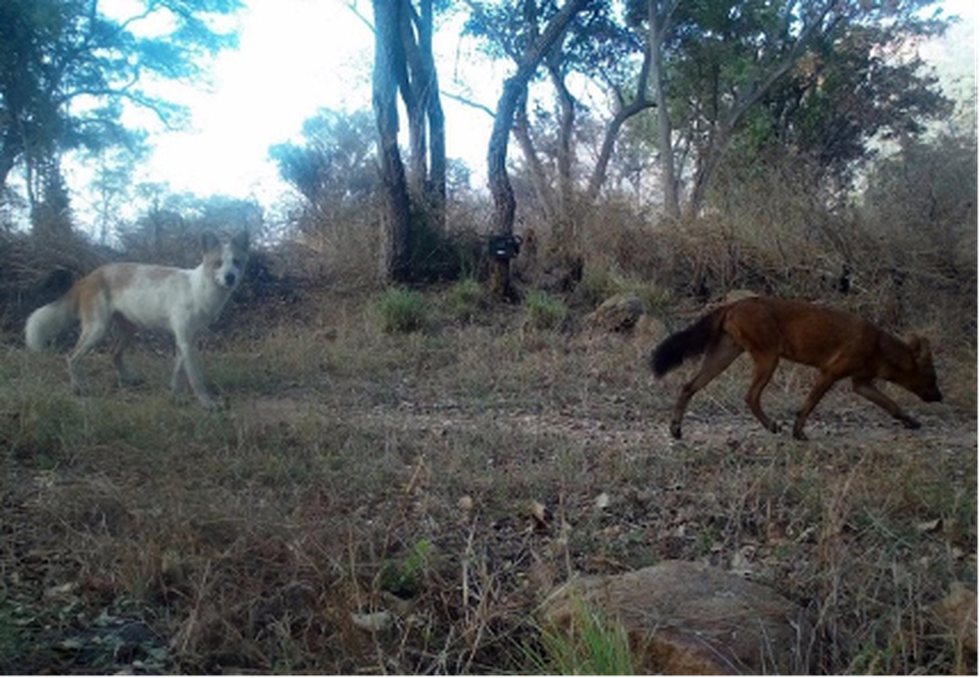
About Albinism:
- Albinism is the result of cells that can’t produce melanin, the pigment needed to colour skin, scales, eyes and hair.
- This genetic condition gets passed to offspring when both parents carry the recessive gene. When albinism is present, the animal can appear white or pink.
- The production of melanin occurs within melanocytes, specialized cells that are present but not fully functional in albino mammals.
Key facts about Dhole
- The dhole or Asiatic Wild Dog is found in three clusters across India namely the Western and Eastern Ghats, the central Indian landscape and North East India.
- The Western and Eastern Ghats is a stronghold regions for dholes.
- Conservation status
- IUCN Red List: Endangered
- The Wildlife Protection Act 1972: Schedule II
- CITES: Appendix II
About Cauvery Wildlife Sanctuary.
- It is extended over three districts, namely, Chamarajanagar, Mandya and Ramanagara in
- The sanctuary provides a vital link between Bannerghatta National Park in the north and BRT Tiger Reserve and Male Mahadev Hills Wildlife Sanctuary in the south.
- The area is drained by three rivers, namely, Cauvery, Arkavathi and Shimsha.
- Flora: The forest is primarily of dry deciduous and scrub types, but a wide range of forest types including moist deciduous, semi-evergreen, evergreen, shola, riverine, Hardwicke forest, etc.
- Fauna: Important animals found in the sanctuary are tigers, elephants, leopards, bison, wild dog etc.
Prelims Pointers
Jan. 30, 2023
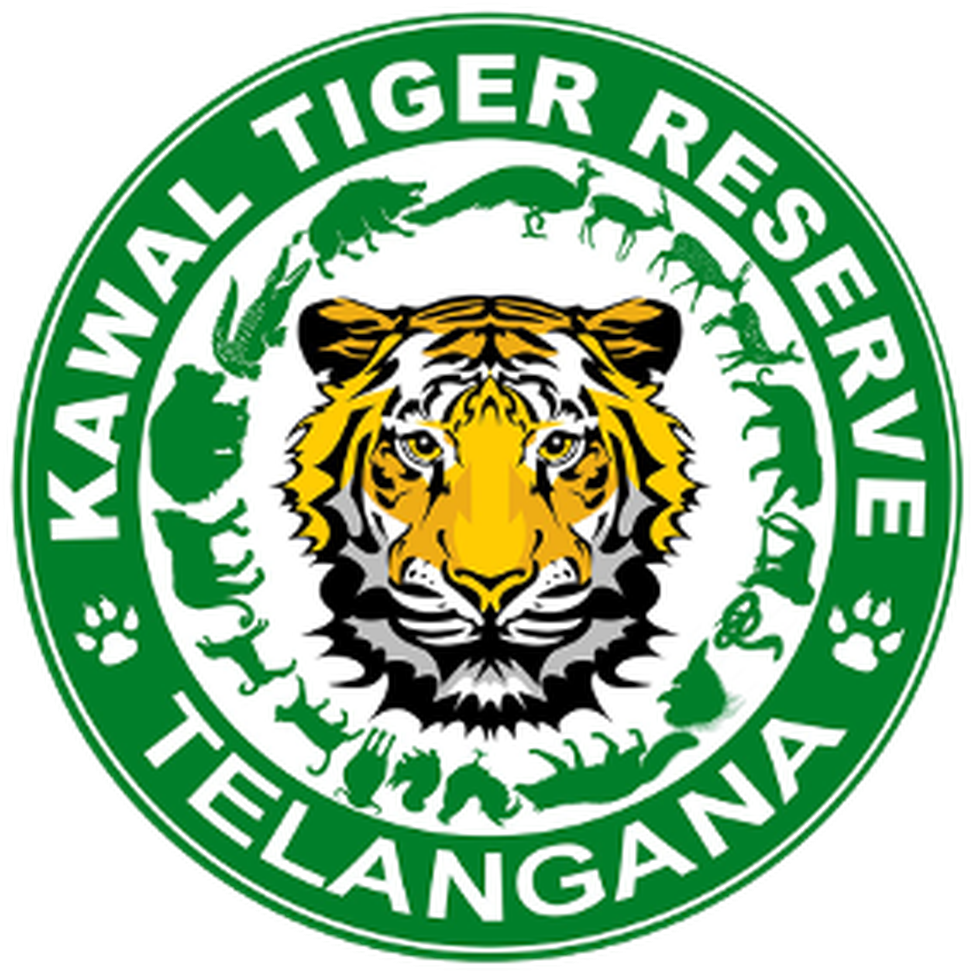
About Kawal Tiger Reserve:
- Kawal Tiger Reserve is located in North Eastern part of Telangana (Old Adilabad district) having the Godavari river on one side and the Maharashtra border on the other side.
- Government of India declared Kawal wildlife sanctuary as Tiger Reserve in 2012.
- This sanctuary is the catchment for the rivers Godavari and Kadam, which flow towards the south of the sanctuary.
- It is a central Indian Tiger Landscape having – a southern Tropical Dry Deciduous Forest.
- Flora: It consists of predominantly teak and bamboo are found here.
- Fauna: Mammal species that have been sighted include tiger, leopard, Indian gaur, cheetal, sambar, nilgai etc.
Prelims Pointers
Jan. 30, 2023
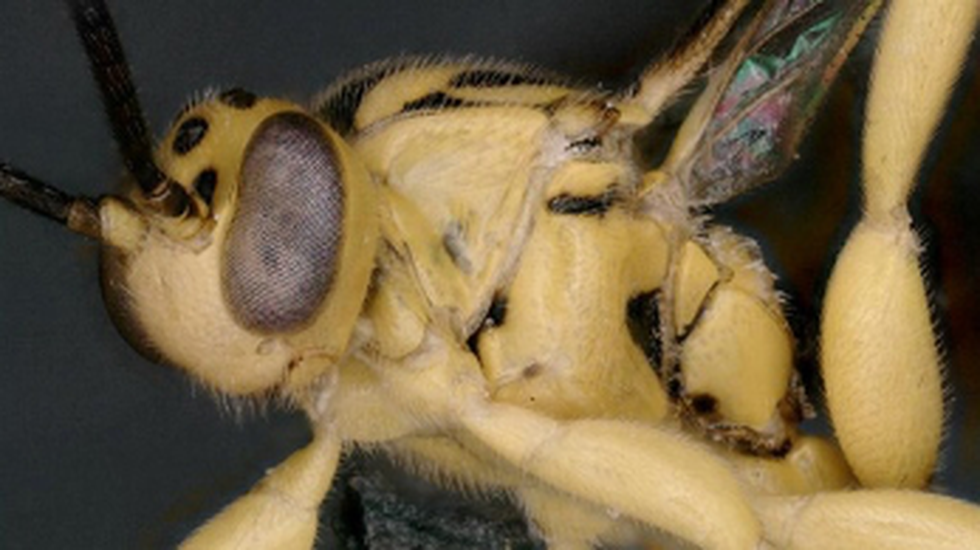
About Soliga ecarinata:
- The Soliga ecarinata is a new wasp that belongs to the subfamily Metopiinae of the Darwin wasps family Ichneumonidae.
- These are seen only in the Palaearctic region, Neotropical and Nearctic regions.
- This is the second genus of this subfamily reported from India and the first from South India.
- Scientists have named this wasp after the Soliga community.
Who are Soligas?
- Soligas are an indigenous tribe of Karnataka, inhabiting the peripheral forest areas near Biligiri Rangana Hills and Male Mahadeshwara in the Chamarajnagar district of Karnataka.
- The Soligas were dependent on hunting and shifting agriculture traditionally.
- They are the first tribal community living inside the core area of a tiger reserve in India to get their forest rights officially recognised by a court of law.
Key facts about the Biligiri Rangan Hills
- It is located northwest of the Western Ghats and on the westernmost edge of the Eastern Ghats.
- The unique geographical positioning and diversity of habitats make BRT one of the richest areas for biodiversity in India.
- The Kapila and Cauvery Rivers flow through these hills.
Prelims Pointers
Jan. 30, 2023

About Quantum coherence:
- It deals with the idea that all objects have wave-like properties.
- It states that, if an object's wave-like nature is split in two, then the two waves may coherently interfere with each other in such a way as to form a single state that is a superposition of the two states.
- This concept of superposition is famously represented by Schrödinger's cat, which is both dead and alive at the same time when in its coherent state inside a closed box.
- It lies at the heart of quantum computing, in which a qubit is in a superposition of the "0" and "1" states.
What is Quantum entanglement?
- It means that aspects of one particle of an entangled pair depend on aspects of the other particle, no matter how far apart they are or what lies between them.
- Like coherence, quantum entanglement also plays an essential role in quantum technologies.
What is the principle of Superposition of waves?
- It states that when two or more waves overlap in space, the resultant disturbance is equal to the algebraic sum of the individual disturbances.
What is a qubit?
- A qubit (or quantum bit) is the quantum mechanical analogue of a classical bit.
- A classical binary bit can only represent a single binary value, such as 0 or 1.
- A qubit, however, can represent a 0, a 1, or any proportion of 0 and 1 in superposition of both states.
- In quantum computing the information is encoded in qubits.
Prelims Pointers
Jan. 30, 2023
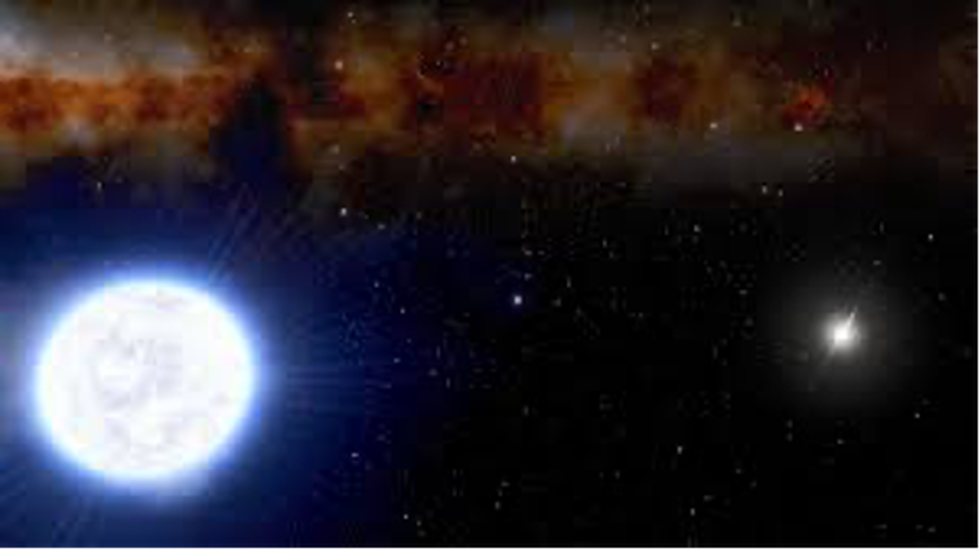
About Spider Star System:
- It is a binary star system in which a superdense star (pulsar) spins quickly, eats another star.
- The super-dense object that begins to pull a matter from the companion resembles the habits of spiders of the genus Latrodectus, in which the female eats the male after mating, hence the name came.
- Initially, the dense pulsar strips material from the outer atmosphere of its companion, periodically shedding the gathered material in violent explosions.
- In the later stage of their lifetimes, the energetic particles streaming out of the pulsar can strip the atmosphere of its companion.
- In either case, the pulsar slowly erodes its companion over time.
- Two Types:
- Black widows: Binary pulsar systems, in which the mass of a companion star is less than 5 percent of the pulsar.
- Redback: Binary pulsar systems in which mass of the companion star is from 10 to 50 percent of the pulsar.
What is a Binary star system?
- A binary system is one in which two stars orbit around a common centre of mass, that is they are gravitationally bound to each other.
What are pulsars?
- Pulsars are rapidly spinning neutron stars, extremely dense starscomposed almost entirely of neutrons and having a diameter of only 20 km (12 miles) or less.
- They emit concentrated streams of radiation far across the cosmos.
What are neutron stars?
- They are the remnants of giant stars that died in a fiery explosion known as a supernova.
- After such an outburst, the cores of these former stars compact into an ultradense object with the mass of the sun packed into a ball the size of a city.
Prelims Pointers
Jan. 30, 2023
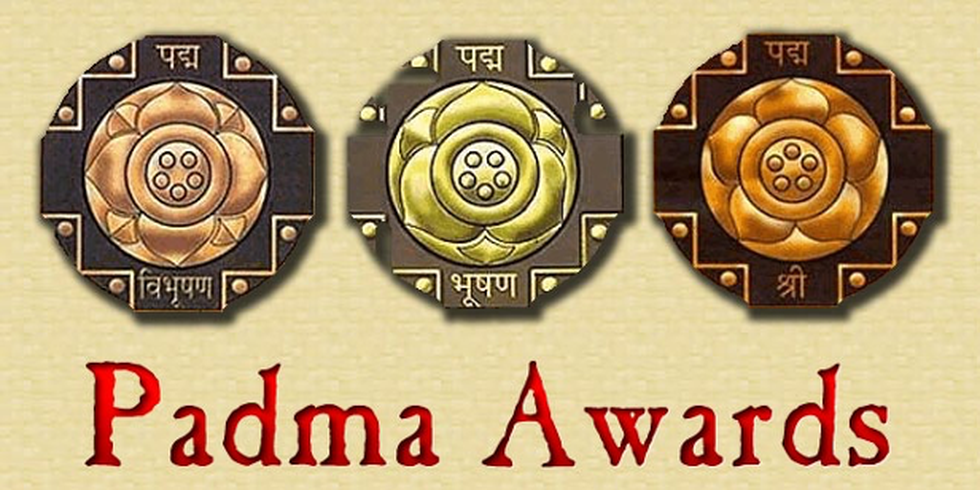
Key facts about Padma Awards:
- The Padma Awards are one of the highest civilian honours of India announced annually on the eve of Republic Day.
- The award seeks to recognize works of distinction and is given for distinguished and exceptional achievements/service in all fields of activities/disciplines.
- Padma Awards were instituted in the year 1954
- The award is given in three categories, namely,
- Padma Vibhushan: for exceptional and distinguished service;
- Padma Bhushan: for distinguished service of a high order; and
- Padma Shri: for distinguished service.
- Award: The awardees are presented a Sanad (certificate) signed by the President and a medallion.
- Eligibility:
- All persons without distinction of race, occupation, position or sex are eligible for these awards.
- Government servants including those working with PSUs, except doctors and scientists, are not eligible for these Awards.
- The award is normally not conferred posthumously. However, in highly deserving cases, the Government could consider giving an award posthumously.
- The award does not amount to a title and cannot be used as a suffix or prefix to the awardees’ name.
- Who can nominate?
- Nominations are invited from Central Ministries/Departments, States/UT Governments, Bharat Ratna and Padma Vibhushan awardees, Institutes of Excellence.
- All citizens can make nominations/recommendation including self-nomination.
- Who Decides?
- All nominations received for Padma Awards are placed before the Padma Awards Committee, which is constituted by the Prime Minister every year.
- On the basis of the recommendations of the Awards Committee, and after approval of the Home Minister, Prime Minister and President, the Padma Awards are announced on the eve of the Republic Day.
Prelims Pointers
Jan. 30, 2023

About All India Survey on Higher Education (AISHE):
- It is conducted by the Ministry of Education since 2011.
- Coverage: It covers all higher educational institutions located in Indian Territory and imparting higher education in the country.
- Objectives:
- To identify and capture all the institutions of higher learning in the country.
- Collect the data from all the higher education institutions on various aspects of higher education.
- The survey collects detailed information on different parameters such as student enrollment, teacher’s data, infrastructural information, financial information etc.
Highlights of AISHE 2020-202:
- For the first time, in AISHE 2020-21, higher educational institutions have filled data using entirely online data collection platform through the Web Data Capture Format (DCF) developed by Department of Higher Education through the National Informatics Centre (NIC).
- Key Findings:
- The total number of Universities / University like institutions registered is 1,113, Colleges 43,796 and Standalone Institutions 11,296.
- Number of Universities has increased by 70, number of Colleges has increased by 1,453, in 2020-21 over 2019-20.
- Enrollment in higher education increases to 4.14 crore, crossing the 4 crore mark for first time; increase of 7.5% from 2019-20 and 21% from 2014-15.
- Female enrollment reaches 2 crore mark, increase of 13 Lakh from 2019-20.
- Gross Enrolment Ratio (GER) has improved from previous year for all social groups.
- Enrollment in Distance Education has increased by 7% in 2020-21 from 2019-20.
- Gender Parity Index (GPI) has increased from 1 in 2017-18 to 1.05 in 2020-21
Total number of faculty/teachers increases by 47,914 from 2019-20
Prelims Pointers
Jan. 30, 2023
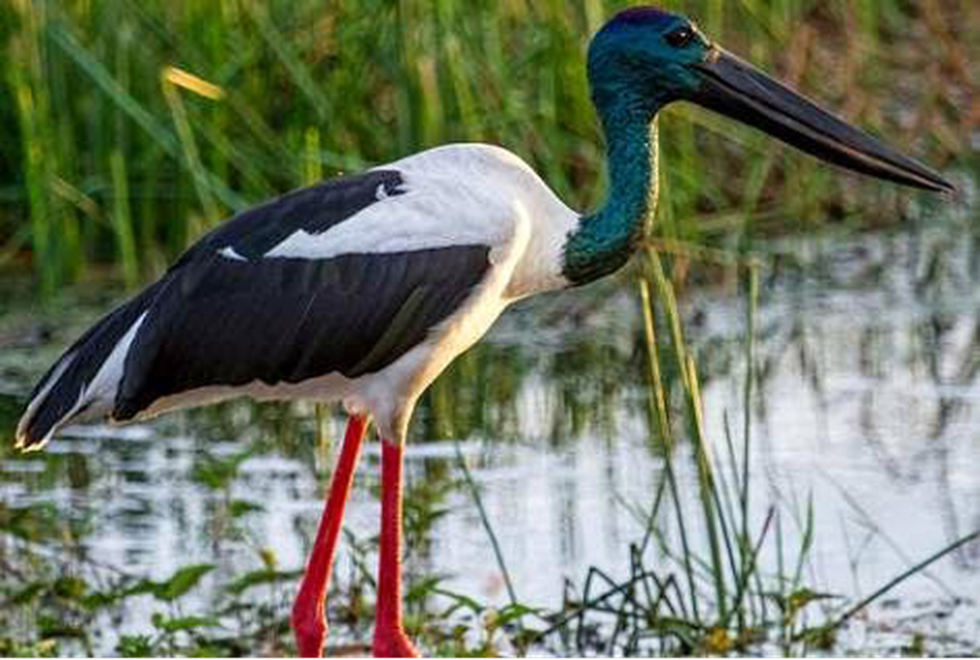
About Black-necked stork:
- The black-necked stork is a tall long-necked wading bird in the stork family.
- Scientific name: Ephippiorhynchus asiaticus
- Distribution: It is distributed in the Indian Subcontinent, Southeast Asia and Australia.
- Habitat: They inhabits wetlands, such as floodplains of rivers with large shallow swamps and pools, and deeper permanent bodies of water.
- Features:
- They are large birds, measuring 110 to 140 cm in length and weighing 4,000 grams.
- Their wingspan is 190 to 220 cm.
- The male and female birds look alike but female is distinguished by its yellow eye.
- IUCN status: “Near Threatened”
Bardasagar reservoir:
- It is located in the Porbandar district, Gujarat.
- The Bardasagar dam is created to store rain water for agricultural purpose.
- The Bardasagar dam and farms on its periphery are the ideal winter escape for thousands of cranese. Common crane and Demoiselle crane.
- Bardasagar is regular nesting ground for elegant Great crested Grebe like Mokarsagar. The “weed ceremony” and dancing ritual of Great crested Grebe can be seen here
Jan. 29, 2023
Prelims Pointers
Jan. 29, 2023
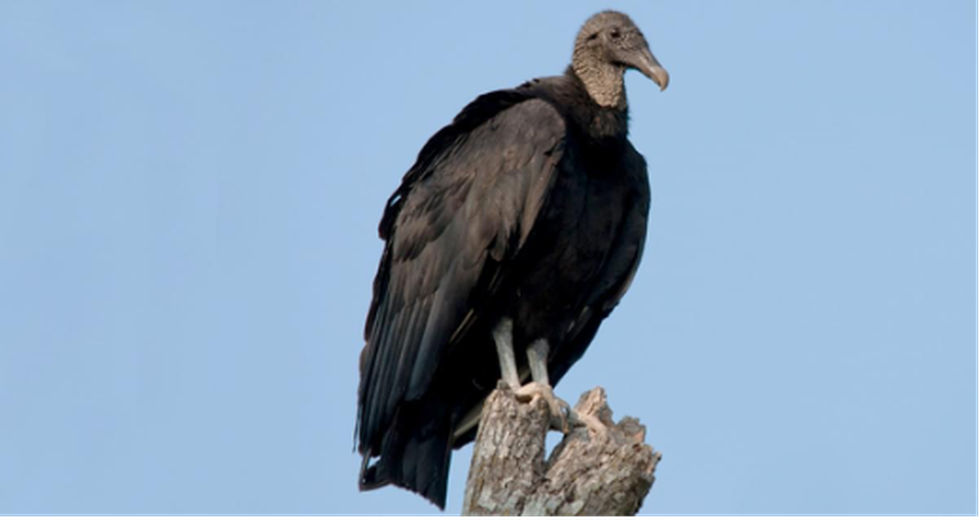
About Black Vulture:
- Black vultures are most abundant at low elevations. They breed in dense woodlands but usually forage in open habitats.
- It is mainly found in the northeastern United States to Peru, Central Chile and Uruguay South America.
- They typically avoid crossing large bodies of water and do not cover long distances.
- Conservation status
- IUCN Red List: Least Concern
Prelims Pointers
Jan. 29, 2023

About Nitrate radicals:
- Nitrate radical is an oxide of nitrogen that consists of three oxygen atoms bound to a nitrogen atom.
- These radicals could increase the amount of unhealthy ozone and PM2.5 fine particulate matter in the atmosphere.
- Nitrate radicals will oxidise gas pollutants such as volatile organic compounds (VOCs).
- These VOCs will then generate ozone and secondary organic aerosol, both deteriorates air quality.
- The Ozone is an air pollutant that affects human health and crop yield.
- The synthesis of nitrate radicals rises at night in some regions of India, particularly in northern India.
- Reducing the emissions of VOCs could reduce this night-time oxidation in India and China.
Prelims Pointers
Jan. 29, 2023
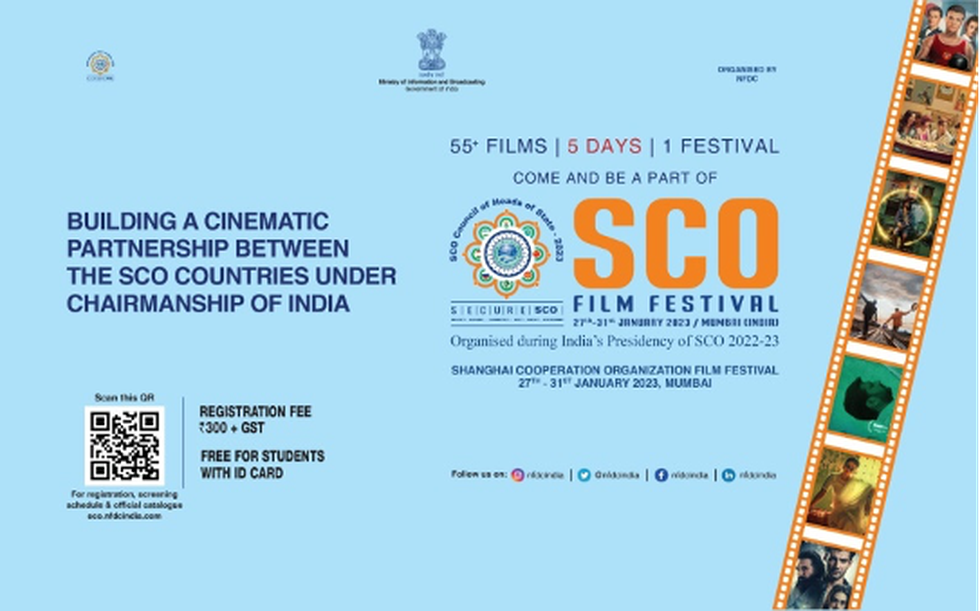
About SCO Film Festival
- It is being organized by the National Film Development Corporation, a Public Sector Undertaking of the Ministry of Information and Broadcasting, in association with the SCO Council of Heads of States.
- Aim: To build cinematic partnerships, have an exchange of programmes, nurture young filmmaking talent and act as a bridge between the cultures of the Shanghai Cooperation.
- As part of the SCO Film Festival in India, it is endeavoured to showcase selected films from the Members, Observer States and Dialogue partners States.
Key facts about the Shanghai Cooperation Organization
- The SCO is a permanent intergovernmental international organisation. It is a Eurasian political, economic, and security alliance and has been the primary security pillar of the region.
- It was established in 2001 and was preceded by the Shanghai Five mechanism.
- The Heads of State Council (HSC) is the supreme decision-making body in the SCO. It meets once a year and adopts decisions and guidelines on all important matters of the organisation.
- The organisation has two permanent bodies:
- The SCO Secretariat is based in
- The Executive Committee of the Regional Anti-Terrorist Structure (RATS) is based in Tashkent.
- Member countries: India, Kazakhstan, China, Kyrgyzstan, Pakistan, Russia, Tajikistan, and Uzbekistan.
- Four observer statesAfghanistan, Belarus, Iran and Mongolia.
Prelims Pointers
Jan. 29, 2023
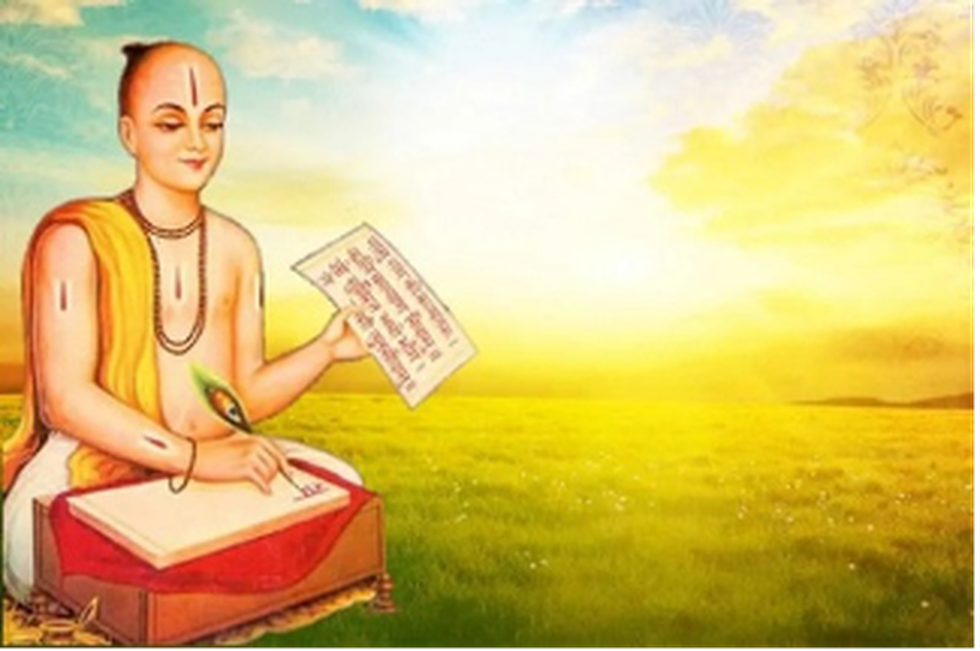
About Tulasidas:
- Tulsidas, whose real name was Ram Bola Dubey, wrote the Ramcharitmanas on the banks of the Ganga in Varanasi.
- The Ramcharitmanas was written in the 16th century in the Awadhi dialect, which is primarily spoken in the districts of Lucknow, Prayagraj, and Ayodhya.
- He was a contemporary of Emperor Akbar and is thought to have corresponded with Abdurrahim Khan-e-Khanan, the son of Akbar's commander Bairam Khan.
- Tulsidas popularised the story of Lord Ram because he wrote in the regional dialect that most people understood.
- This enraged ancient Sanskrit scholars, and Tulsidas documented his anguish in his Kavitawali.
Prelims Pointers
Jan. 29, 2023

About Grievance Appellate Committee
- The central government notified three Grievance Appellate Committees (GACs) under an amendment to IT Rules 2021.
- Composition
- Each of the three GACs will have a chairperson, two whole-time members from various government entities and retired senior executives from the industry.
- Term: Three years from the date of assumption of office.
- The GAC will be a virtual digital platform that will operate only online and the digitally entire process, from the filing of an appeal to the decision, will be conducted digitally.
- Users will have the option to appeal against the decision of the grievance officer of the social media intermediaries and other online intermediaries before this new appellate body.
- The Committee will endeavour to address the user's appeal within 30 days.
Prelims Pointers
Jan. 29, 2023
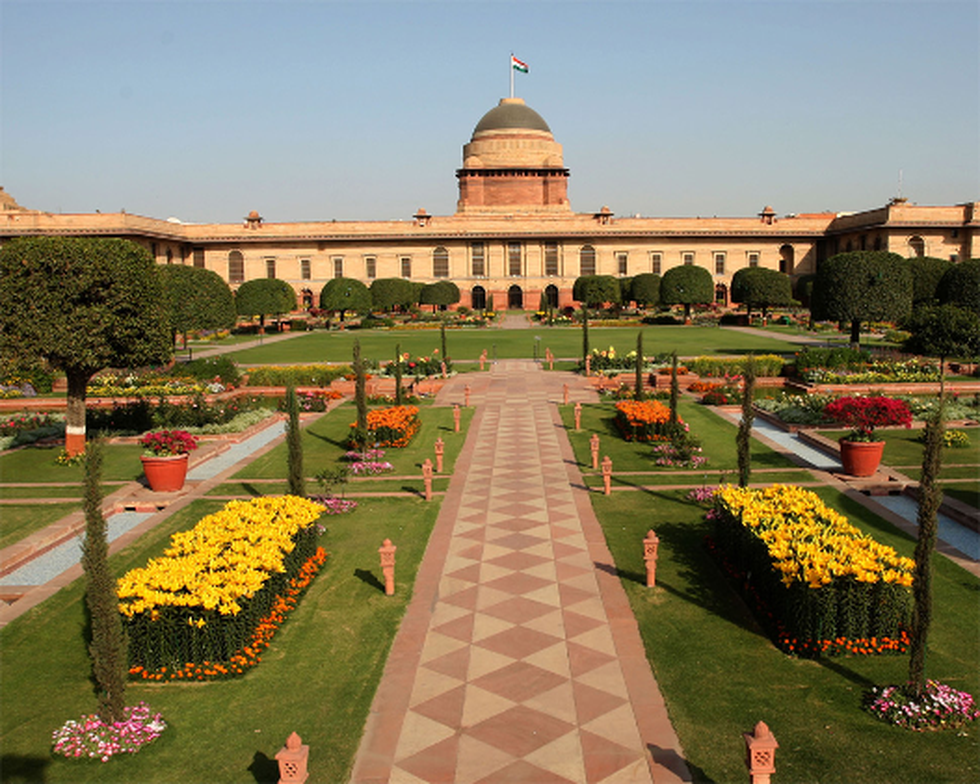
Features of Mughal gardens:
- These are developed in Islamic architectural style by the Mughals in India and other countries.
- These gardens are frequently seen as a place for relaxation and meditation.
- Examples: The Taj Mahal Garden, Agra Fort, Humayun's Tomb Garden, and the Red Fort Garden.
- Design:
- This gardening design was influenced by Persian, namely the Charbagh structure.
- Gardens are formal in style; symmetrically designed in rectangular or square
- The garden area is divided into four plots by water channels. These four channels represent four rivers of life.
- The running water provides coolness and freshness to the garden.
- The four plots are planted with trees, shrubs, etc.,
- The axis is straight and central and sometimes represented by trees line.
- The water pool created in the centre with over flowing water serves as the central specimen.
- Fountains, cascades are linked to the central pool to create scenic beauty.
- Mughal gardens are surrounded by a high, robust wall. The wall's summit is decorated with serrated battlements.
- The entrances are often towering and beautiful. The doors are massive wooden structures studded with hefty iron nails and spikes.
Prelims Pointers
Jan. 29, 2023
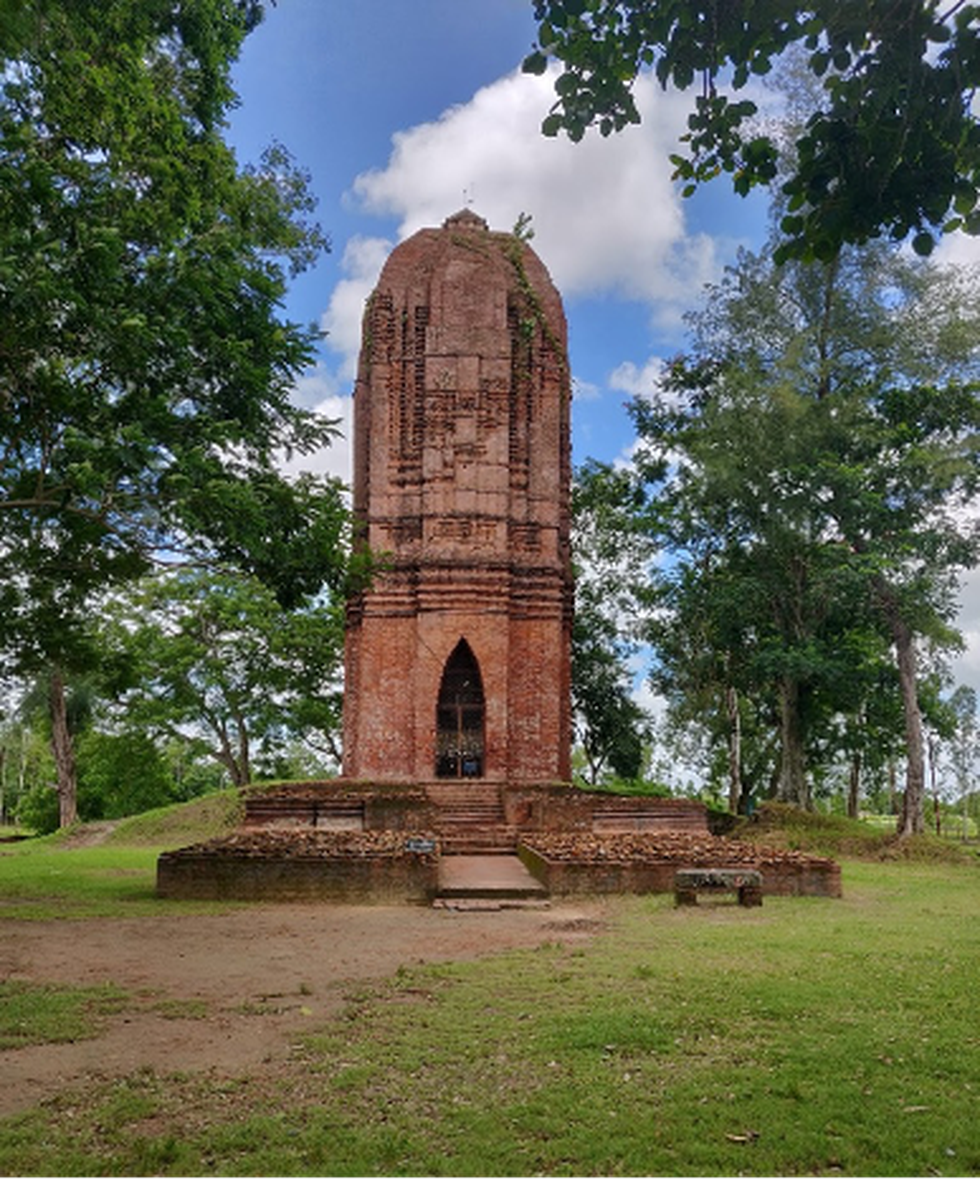
About Jatar Deul temple:
- It is a Hindu Temple dedicated to Lord Shiva.
- Location: Located at Kanakan Dighi Village in South 24 Parganas District in West Bengal.
- The Temple stands on a small hill in the landscape of the southern Sundarbans settlements.
- A copper plate found near the temple in 1875 suggests that Raja Joychandra constructed the temple in 975 AD.
- The temple has been classified as a Monument of National Importance by the Archaeological Survey of India (ASI).
- Structure:
- This temple is facing towards the east and follows the Kalingan style of architecture.
- The temple is built over a raised platform.
- It has an arched gateway leading to the sanctum.
- The sanctum is situated below the ground level.
- The sanctum houses Lingas, pictures and idols of various gods & goddesses of Hindu pantheon.
- The walls of the temple were intricately decorated with decorative bricks, but most of it is lost due to unplanned reconstruction.
Kalingan style of architecture:
- It is a style of Hindu architecture which flourished in the ancient Kalinga previously known as Utkal and part of the kingdom of Magadha or present eastern Indian state of Odisha.
- In Kalinga style – the temple is made up of two structures: a tower and hall. The Tower is called ‘Deula’, and the hall is called ‘Jagmohan’.
- The style consists of three distinct types of temples: Rekha Deula, Pidha Deula and Khakhara Deula. .
- Rekha Deula: It is a tall building with a sikhara. The Rekha Deula means a shrine with different parts in a line.Eg: Rekha Deula in the Lingraj Temple of Bhubneshwar.
- Pidha Deula: Pidha Deula refers to the square building with a pyramid-shaped roof, like the vimanas.Eg: The assembly hall of the Konark Sun Temple.
- Khakhara Deula: It is altogether a different style of architecture closely appearing similar to the Dravidian Gopuran design.The temples of the feminine deities as Shakti are temple of this type. Eg: Baitala temple of Bhubneshwar dedicated to Chamunda.
Prelims Pointers
Jan. 29, 2023
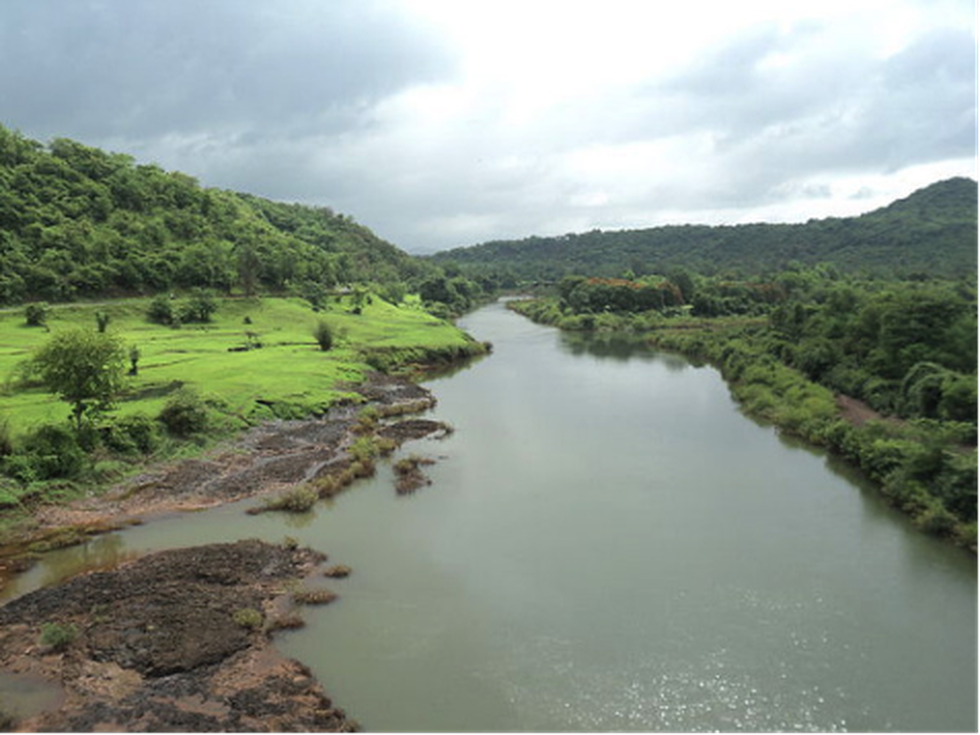
Why in News?
- The Karnataka government recently received clearance from the Central government for two Detailed Project Reports (DPR) on the Kalasa-Banduri water diversion project on the Mahadayi River.
About Mahadayi river:
- Origin: Mahadayi river rises in the Western Ghats, from the Bhimgad Wildlife Sanctuary in Khanapur taluk of Karnataka’s Belagavi district.
- The river travels 35 km in Karnataka; 82 km in Goa before joining the Arabian Sea at Panji (North-Goa).
- Also called Mandovi in Goa, Mahadayi is a rain-fed river that is shared between Karnataka and Goa for their water needs.
- The Salim Ali Bird Sanctuary is located on the island of Chorao in the Mandovi river.
- Major Tributaries: Kalasa Nala, Banduri Nala, Surla Nala, Haltar Nala, Poti Nala, Mahadayi Nala, Pansheer Nala, Bail Nala, Andher Nala.
What is the Kalasa-Banduri project?
- The project involves the construction of dams and a canal system to divert water from the Mahadayi River, located in Goa, to the Malaprabha River (a tributary of Krishna river) basin in Karnataka.
- The main goal of the project is to meet the drinking water needs of the districts of Belagavi, Dharwad, Bagalkot, and Gadag in Karnataka.
- The project was proposed by the Karnataka Government in the 1980s, but faced opposition from the state of Goa.
Prelims Pointers
Jan. 29, 2023
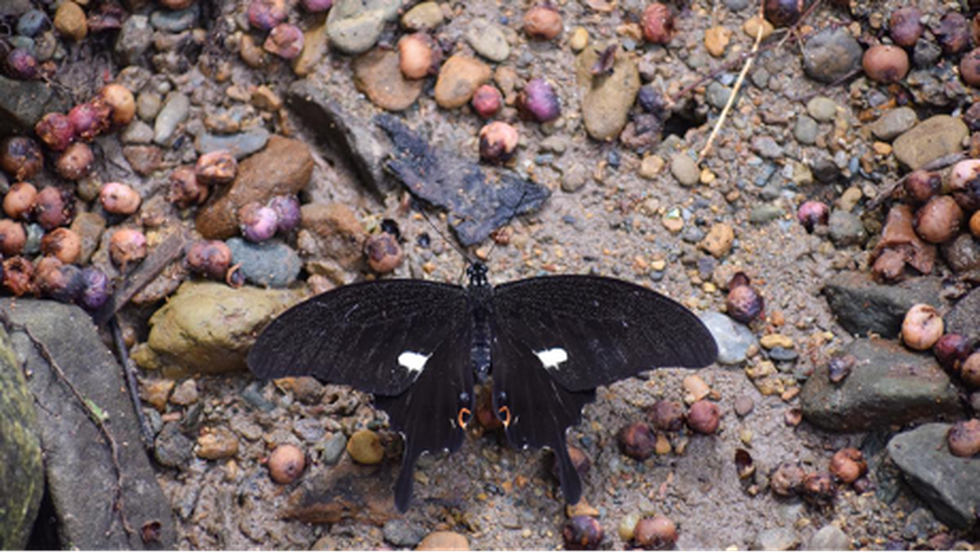
About Noble’s Helen butterfly:
- It is a swallowtail butterfly with a wingspan of 100–120 mm.
- It has an extra white spot in the dorsum of the forewing.
- Scientific name: Papilio noblei
- Distribution: They are found in Myanmar, Yunnan, Hubai (China), North Thailand, Laos, Cambodia, Vietnam.
- The species is known to be very rare in occurrence in its previously known ranges.
Namdapha National Park:
- Location:
- It lies on the international border between India and Myanmar (Burma) within Changlang District in the state of Arunachal Pradesh.
- The Namdapha protected area is located between Dapha Bum ridge of Mishmi Hills, of North Eastern Himalayas and Patkai Ranges.
- It lies in close proximity to the Indo-Myanmar-China trijunction.
- It is the largest protected region of the Eastern Himalayan biodiversity hotspot.
- It was declared a National Park in 1983.
- Climate:It falls within the geographical sub-tropical zone and enjoys the sub-tropical climate.
- Biodiversity:
- It is only park in the World to have the four Feline species of big cat namely the Tiger (Panthera Tigris), Leopard (Panthera Pardus), Snow Leopard (Panthera Uncia) and Clouded Leopard (Neofelis Nebulosa).
- Hoolock Gibbons (Hylobates Hoolock), a highly endangered and only ‘ape’ species found in India is found in this national park.
- The park is also famous for critically endangered species like the Namdapha flying squirrel.
- Flora: Sapria himalayana, Amentotaxus, Cephalotaxus, Pinus merkusii (Sumatran pine) and Abies delavayi (Delavay's Fir) etc.
- Fauna: Snow leopards, clouded leopards, common leopards, tigers,Red Panda,Himalayan bear, dholes, wolves, Hoolock Gibbon, hog deer etc.
Prelims Pointers
Jan. 29, 2023
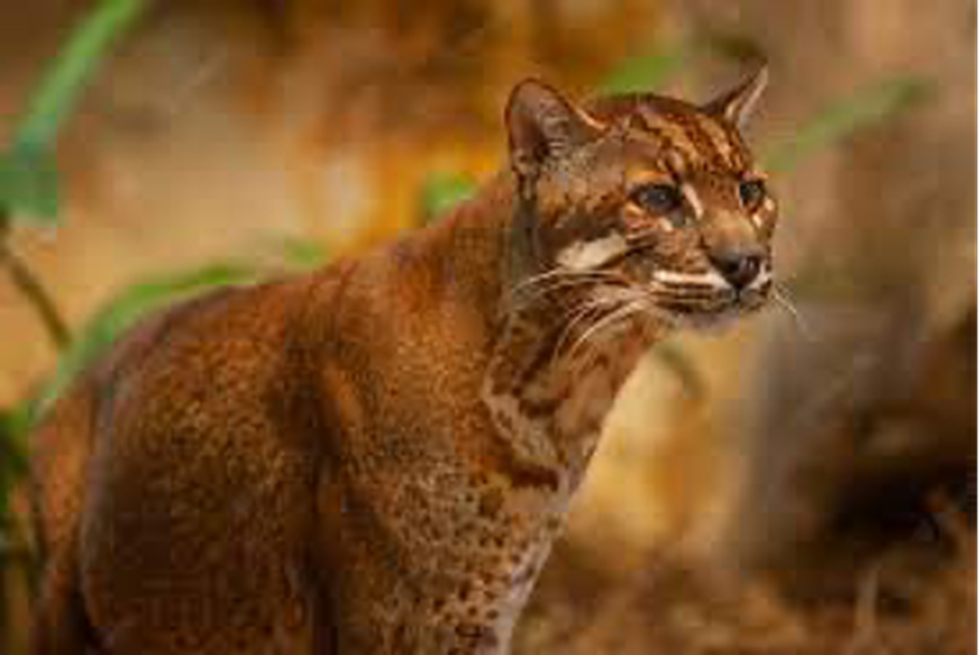
Why in News?
- According to the experts, these are the first photographic records of the melanistic Asian golden cat, also known as the Temminck’s cat, from West Bengal.
About Asian golden cat:
- It is a medium sized cat with relatively long legs.
- Scientific name: Catopuma temminckii
- Other names: They are known as the “fire cat” in Thailand and Burma, and as the “rock cat” in parts of China.
- Distribution: The species occurs in Southeast Asia, from Nepal and Tibet to Southern China, Sumatra and India.
- Habitat: It prefers forest habitats that are interspersed with rocky areas, being found in deciduous, tropical and subtropical evergreen rainforests.
- Their fur ranges in color from cinnamon to various shades of brown, and also gray and black (melanistic).
- Conservation status:
- IUCN: “Near threatened”
- Wildlife (Protection) Act of India, 1972: Schedule 1
Buxa Tiger Reserve (BTR):
- Location: BTR lies in Alipurduar sub-division of Jalpaiguri district of West Bengal.
- Its northern boundary runs along the international border with Bhutan.
- It is the easternmost extension of extreme bio-diverse North-East India & represents the highly endemic Indo-Malayan region.
- The fragile "Terai Eco-System" constitutes a part of this Reserve.
- BTR serves as an international corridor for elephant migration between India and Bhutan.
- The reserve encompasses as many as eight forest types.
- Flora: The main species constitutes trees like Sal, Champ, Gamar, Simul, Chikrasi.
- Fauna: The main species include Asian Elephant, Tiger, Gaur, Wild boar, Sambar,Wild dog (Dhole).
Jan. 28, 2023
Prelims Pointers
Jan. 28, 2023
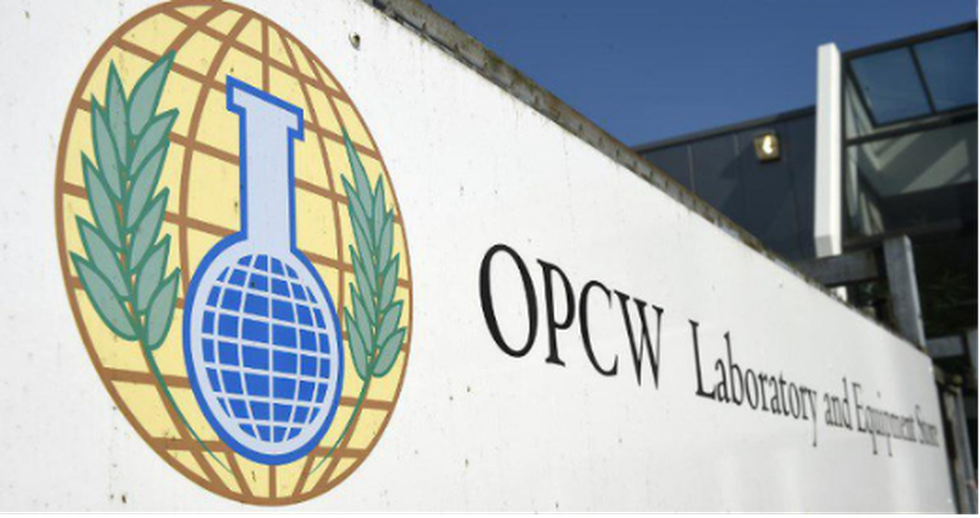
About Organisation for the Prohibition of Chemical Weapons (OPCW):
- It is the implementing body of the Chemical Weapons Convention (CWC).
- Mission: To implement the provisions of the Chemical Weapons Convention (CWC) in order to achieve the OPCW’s vision of a world that is free of chemical weapons and of the threat of their use, and in which cooperation in chemistry for peaceful purposes for all is fostered.
- Its headquarters are located in The Hague, Netherlands.
- The OPCW receives states-parties’ declarations detailing chemical weapons-related activities or materials and relevant industrial activities.
- The OPCW is authorized to perform inspections to verify that signatory states are complying with the convention.
- It also performs testing of sites and victims of suspected chemical weapons attacks.
- OPCW reports on its inspections and other activities to the UN through the office of the secretary-general.
- The OPCW was awarded the Nobel Peace Prize in 2013.
Chemical Weapons Convention (CWC):
- It is a multilateral treaty that bans chemical weapons and requires their destruction within a specified period of time.
- It entered into force on April 29, 1997.
- The CWC requires states-parties to declare in writing to the OPCW their chemical weapons stockpiles, chemical weapons production facilities (CWPFs), relevant chemical industry facilities, and other weapons-related information.
- The CWC is open to all nations and currently has 193 states-parties.
Prelims Pointers
Jan. 28, 2023
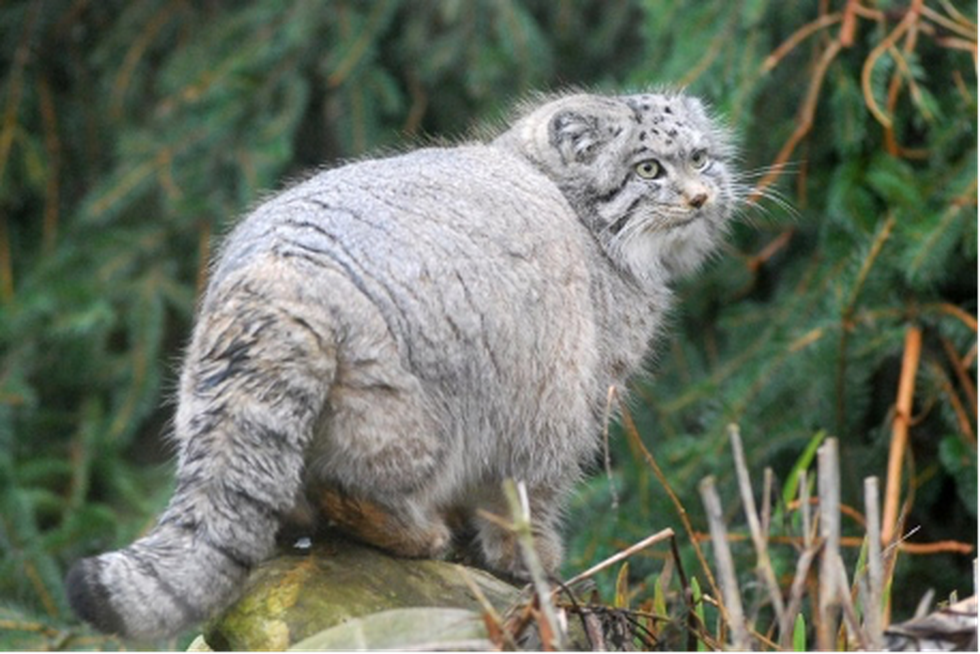
About Pallas’s cats:
- The Pallas’s cat, also known as manul, is a small wild cat, perfectly adapted to the harsh conditions typical of its habitat.
- Naturally secretive, it is rarely seen and little known.
- Habitat: Wide but fragmented distribution throughout montane grasslands and steppes of Central Asia.
- Its core populations are in Mongolia and China.
- Conservation status
- IUCN Red List: Least concern
Prelims Pointers
Jan. 28, 2023
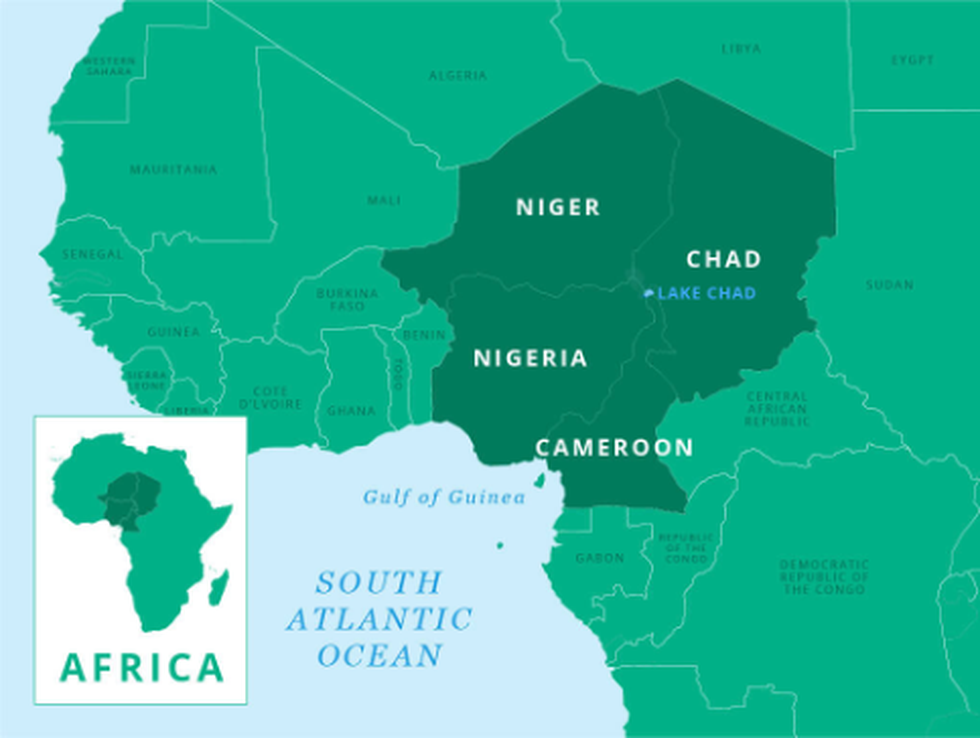
About Lake Chad Basin
- Lake Chad is located in the Sahel, the vast semi-arid region south of the Sahara desert.
- It is bordered by 4 countries - Chad, Cameroon, Niger and Nigeria.
- Source of the Lake:It is fed mainly by the Chari River through the Lagone tributary.
- The Lagone tributary used to provide 90 % of its water.
- Significance of the Lake: The Lake is vital for indigenous, pastoral and farming communities in these countries.
- The lake has been supporting drinking water, irrigation, fishing, livestock and economic activity for over 30 million people in the region.
- The Lake Chad basin in west and central Africa covers 8% of the African continent and is home to 42 million people.
What are Issues in the Lake Basin Region?
- Lake Chad has shrunk by 90% in 60 years, and climate change is a significant contributor.
- A 13-year insurgency of the Boko Haramextremist group and other militant groups has destabilized the Lake Chad basin and the wider Sahel region.
Prelims Pointers
Jan. 28, 2023
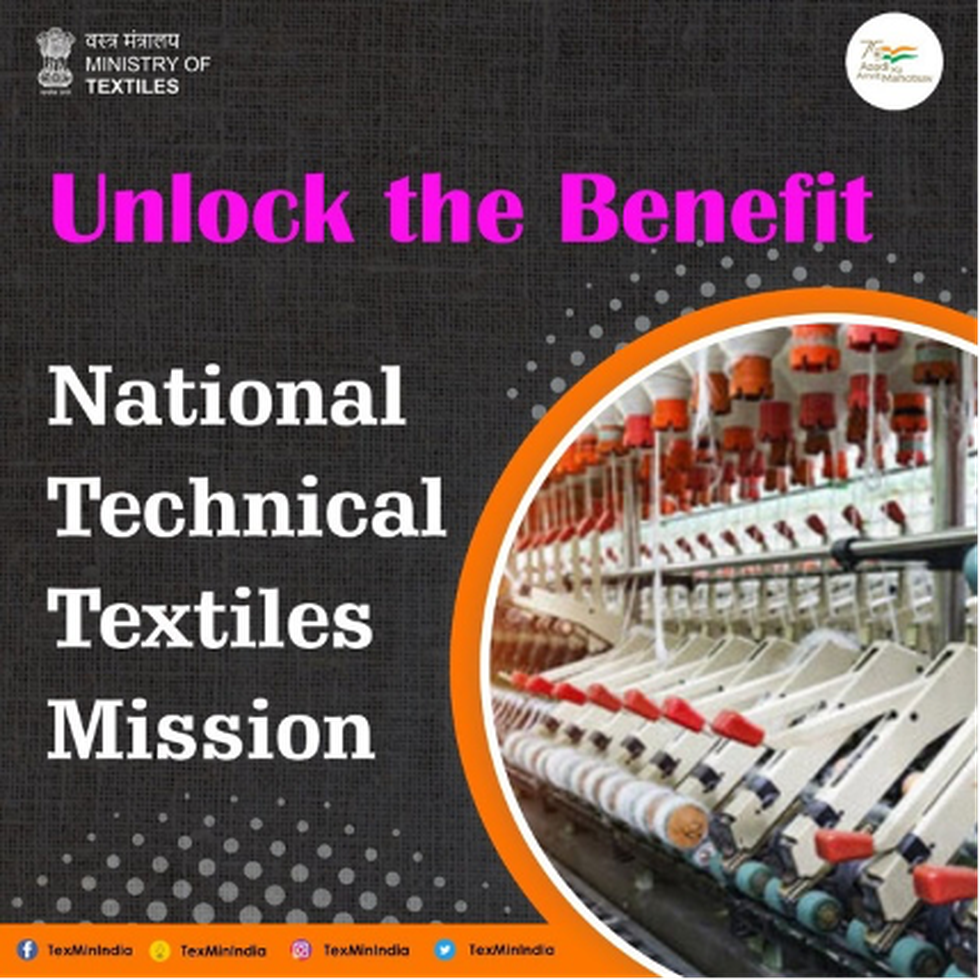
What are Technical Textiles?
- Technical Textiles are textile products which are manufactured primarily for their functionality and use rather than aesthetic appeal.
- Technical textiles are classified into 12 major groups based on their application areas namely; Agrotech, Geotech, Buildtech, Mobiltech, Hometech, Clothtech, Indutech, Meditech, Sportstech, Protech, Packtech, Oekotech.
Key features of the National Technical Textiles Mission India
- The Ministry of Textiles has launched NTTM to increase the penetration level of technical textiles in India while leveraging the extraordinary growth rate of the sector.
- The mission aims to position India as a global leader in Technical Textiles.
- The mission will comprise the following four components:
- Research, Innovation and Development
- Promotion and Market Development
- Export Promotion
- Education, Training, Skill Development
- Implementation:It has been approved with an implementation period of four years starting from FY 2020-21 till FY 2023-24. The total outlay of the mission is INR 1480 Cr.
Prelims Pointers
Jan. 28, 2023
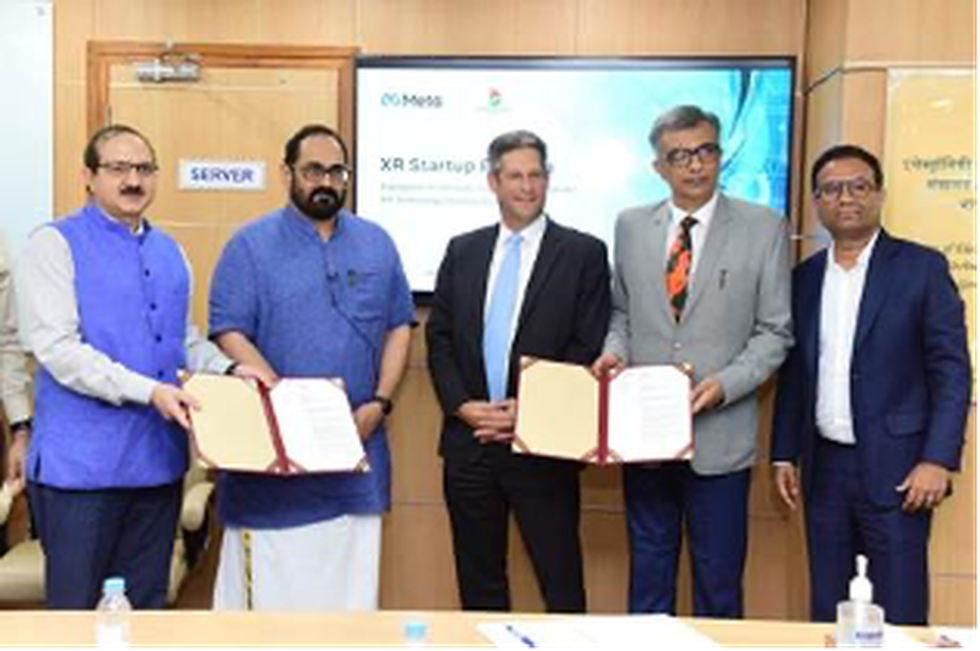
About Extended Reality (XR) Startup Program:
- The XR Startup Program is a collaboration between Meta and MeitY Startup Hub (MSH).
- Aim: To accelerate India’s contribution towards building the foundations of the metaverse and nurturing the development of Extended Reality (XR) technologies in India.
- It includes two segments namely; an Accelerator and a Grand Challenge
- Accelerator:
- The Accelerator will nurture and foster 40 early-stage startups working with XR technologies through a well-designed 6-month program.
- Each startup will get access to many benefits, including a grant of ₹ 20,00,000, mentorship by industry experts and researchers, access to a network of potential strategic partners and investors, technology and infrastructure support, and opportunities to participate and present at relevant industry events.
- Grand Challenge:
- The Grand Challenge is aimed at supporting early-stage innovators to upscale from the R&D phase to developing workable prototypes and Minimum Viable Products (MVPs).
- It will encourage early-stage innovators in sectors like Education, Learning and Skills, Healthcare, Gaming and Entertainment, Agritech & Climate Action and Tourism & Sustainability.
- It will include 4 sector-specific challenges to advance the XR technology ecosystem in India.
- A total of 80 shortlisted innovators will receive a grant of ₹ 50,000 and an opportunity to attend the boot camp.
- Of the 80 shortlisted innovators, 16 innovators will be supported with grants worth ₹ 20,00,000 to help them develop MVP(s)/ prototypes.
Prelims Pointers
Jan. 28, 2023
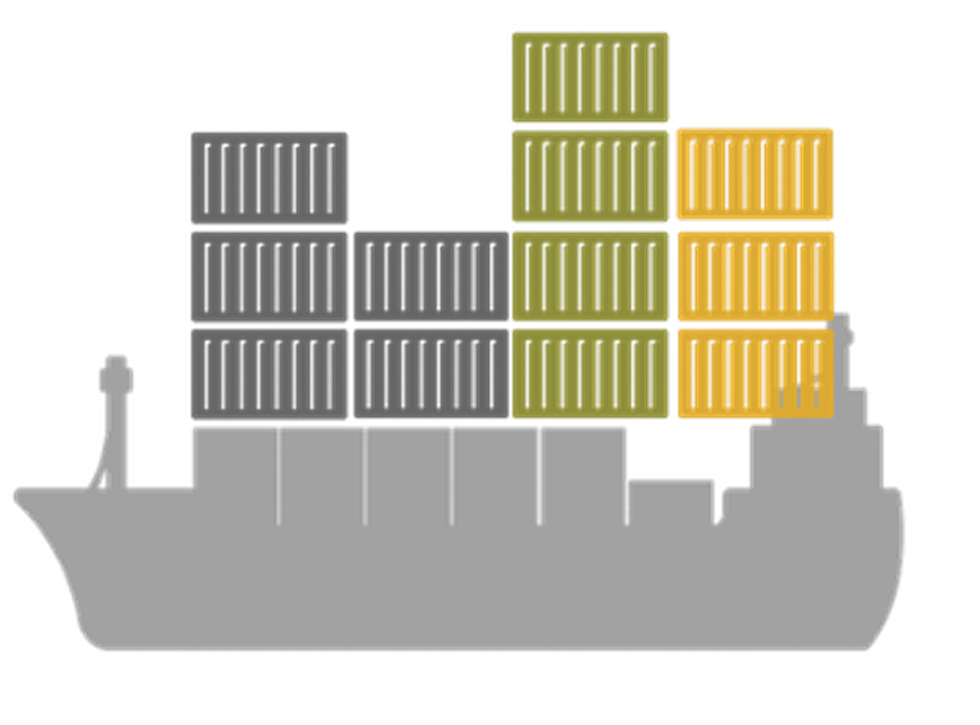
About National Logistics Portal Marine:
- The National Logistic Portal (marine) (NLP) is a project of national importance, as envisaged by the Ministry of Ports Shipping Waterways and the Ministry of Commerce & Industry.
- Aim: To use IT to connect all logistics community stakeholders, to improve efficiency and transparency by reducing costs and time delays and achieving easier, faster, and more competitive service offerings.
Key features of the Portal
- NLP will serve as a single point of contact for all logistics trade processes across the country, including all modes of transportation via waterways, roads, and airways.
- The activities of NLP Marine are categorized into four distinct verticals
- Carrier
- Cargo
- Banking and Finance
- Regulatory Bodies and Participating Government Agencies (PGAs).
- The Latch On feature facilitates the trade in providing the required features that are not directly embedded into NLP Marine, by linking through systems developed by other agencies seamlessly without duplication of efforts.
- It is envisaged that many standalone applications, developed by multiple vendors, users, and other stakeholders will integrate with NLP Marine through appropriate curation.
- It also enables digital transactions for payments required for the clearance processes such as Port charges, CFS charges, shipping line charges, transportation charges.
Prelims Pointers
Jan. 28, 2023

About National Centre for Polar and Oceanic Research (NCPOR):
- It is an autonomous research institute under the Ministry of Earth Sciences (MoES) established in 1998.
- NCPOR is tasked with planning and executing polar expeditions and scientific research in Antarctica, Arctic, Himalayas and Southern Ocean.
- NCPOR is the nodal agency for planning, promoting, coordinating, and executing the entire gamut of polar and southern ocean scientific research in the country and the associated logistics activities.
- It also undertakes research on some of the country’s strategically vital projects like mapping of Exclusive Economic Zone (EEZ), continental shelf margins and the Deep Ocean Mission.
- The Center maintains a Research Advisory Committee (RAC) to help guide and concentrate the research activities.
- It is located in Vasco da Gama, Goa, and was formerly known as the National Center for Antarctic and Ocean Research (NCAOR).
Prelims Pointers
Jan. 28, 2023

About GJ 1002 b and c:
- The two new planets are named, GJ 1002 b and GJ 1002 c.
- These planets lie in so-called habitable zones, within which water could be found in liquid form, and which is located in the immediate vicinity of the star due to its low luminosity.
- Planet b has a mass slightly higher than Earth’s, is the closer of the two and its year lasts only 10 days.
- Planet c is about a third more massive than Earth and takes about 20 days to orbit the star.
- The two planets were discovered using the radial velocity (RV) method.
What is the Radial Velocity method?
- This method is based on the detection of variations in the velocity of the central star, due to the changing direction of the gravitational pull from an unseen exoplanet as it orbits the star.
Prelims Pointers
Jan. 28, 2023
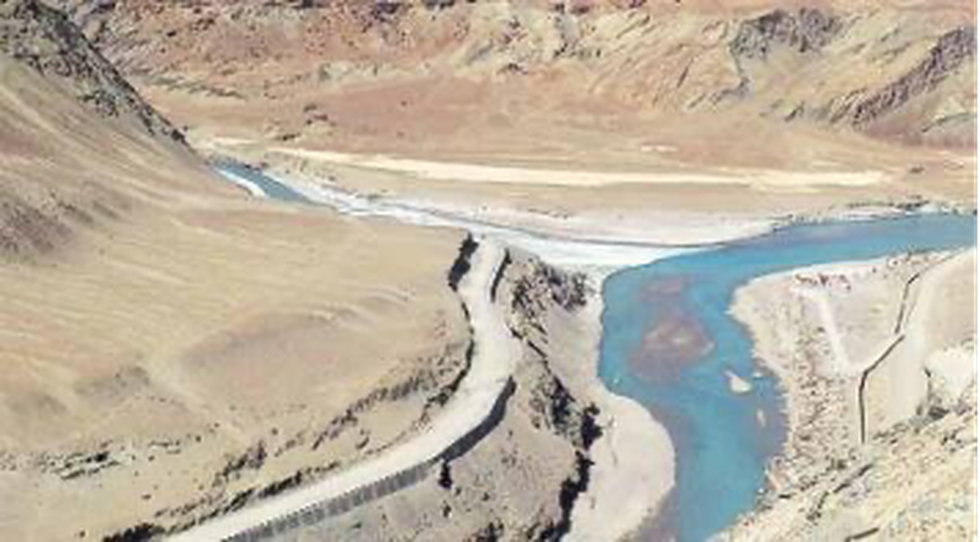
About Indus Water Treaty:
- It was signed in September 1960 between India and Pakistan.
- The treaty was brokered by the World Bank, which too is a signatory to the treaty.
- The treaty fixed and delimited the rights and obligations of both countries concerning the use of the waters of the Indus River system.
- It gives control over the waters of the three "eastern rivers' -- the Beas, Ravi, and Sutlej -- to India, while control over the waters of the three "western rivers' ' -- the Indus, Chenab, and Jhelum -- to Pakistan.
- The treaty allows India to use the western river waters for limited irrigation use and unlimited non-consumptive use for such applications as power generation, navigation, floating of property, fish culture, etc.
- It lays down detailed regulations for India in building projects over the western rivers.
Prelims Pointers
Jan. 28, 2023

About Lucy Mission:
- NASA’s Lucy mission is the first spacecraft launched to explore the Trojan asteroids, a population of primitive asteroids orbiting in tandem with Jupiter.
- Lucy was successfully launched Oct. 16, 2021, and will visit eight asteroids over 12 years — one asteroid in the main belt between Mars and Jupiter, and seven Trojan asteroids leading and trailing Jupiter in its orbit.
What are Trojan Asteroids?
- Asteroids sharing an orbit with a planet, but which are located at the leading (L4) and trailing (L5) Lagrangian points, are known as Trojan asteroids.
- These asteroids occupy a stable Lagrangian point in a planet’s orbit around the Sun.
- Trojan Asteroids are some of the oldest remnants from the formation of our solar system 5 billion years ago.
- There are currently over 4,800 known Trojan asteroids associated with Jupiter.
- They orbit the Sun in two loose groups: one group leading ahead of Jupiter in its orbit, the other trailing behind at the same distance from the Sun as Jupiter.
- Due to the combined gravitational influences of the Sun and Jupiter, these Trojan asteroids have been trapped on stable orbits (around what is known as the Lagrange Points) for billions of years.
What is a Lagrange point?
- Lagrange Points are positions in space where the gravitational forces of a two body system like the Sun and the Earth produce enhanced regions of attraction and repulsion.
- The Lagrange Points are positions where the gravitational pull of two large masses precisely equals the centripetal force required for a small object to move with them.
- These can be used by spacecraft to reduce fuel consumption needed to remain in position.

